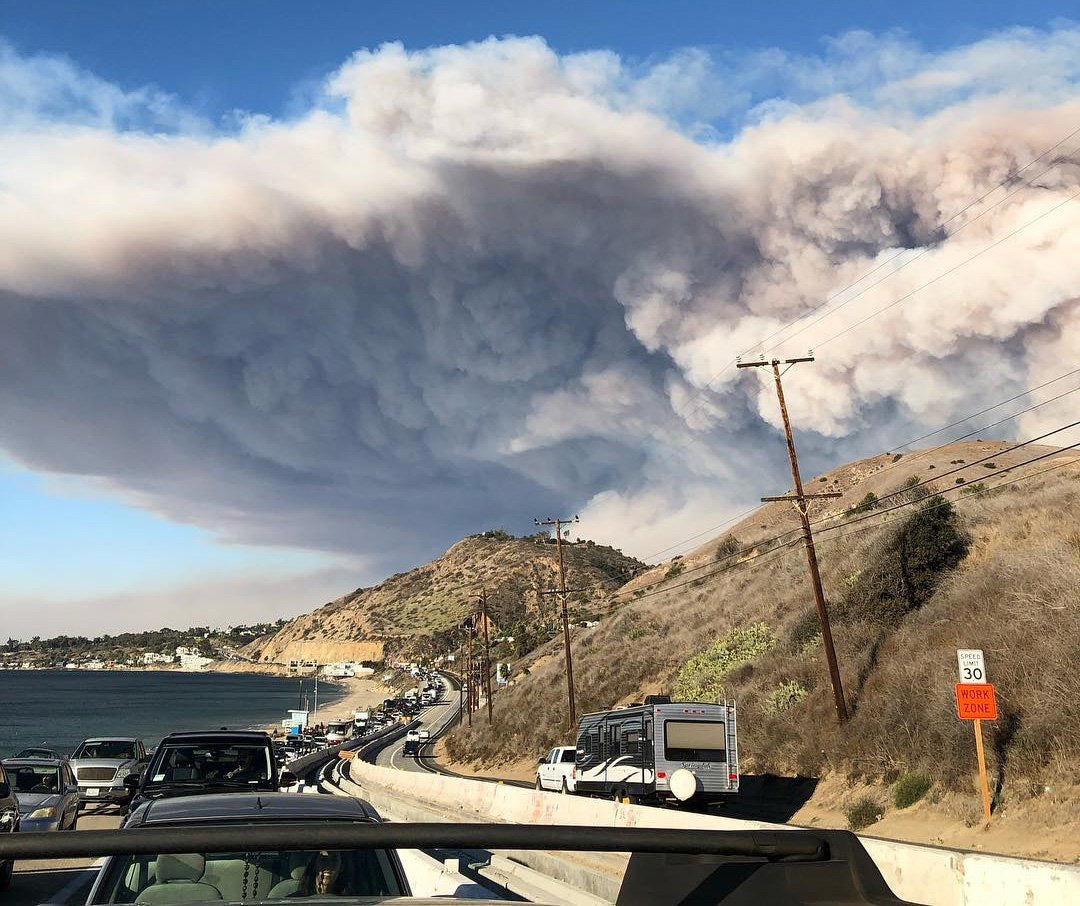The fire destroyed 1,643 structures, killed three people, and prompted the evacuation of more than 295,000 people
The Woolsey Fire
On a busy day in California, Thursday, November 8, 2018, the state was facing multiple crises. The night before, a tragic mass shooting incident had left 12 people dead at a bar in Thousand Oaks, casting a dark shadow over the region. Little did anyone know that the worst was yet to come.
As the clock struck midnight, the Camp Fire, like an unrelenting force of nature, began its destructive journey in northern California. Within hours, the flames had devoured much of Paradise, leaving a trail of devastation in its wake. The day was just beginning, and already the state was reeling from the unforgiving power of the fire.
Meanwhile, in a different corner of California, about 13 miles southwest of Thousand Oaks, the Hill Fire ignited, casting an eerie glow in the midday sky. As if orchestrated by a malevolent force, the Woolsey Fire followed suit just an hour later, joining the ranks of the burning infernos. Three major fires, all demanding the attention of exhausted firefighters and dwindling resources, created a state of emergency like no other.
Firefighters, still in the midst of responding to the Hill Fire, were suddenly thrust into a battle on multiple fronts. Strike teams raced against time, their engines roaring as they rushed from one fire to another. The men and women on the front lines, already fatigued from their relentless efforts, faced an unprecedented challenge. This was a moment that even the most seasoned firefighters could not have predicted or fully prepared for.
The Woolsey Fire, a relentless beast, blazed through Ventura County and crossed into Los Angeles County. The scope and scale of the fire tested the capabilities of the LA City, LA County, and Ventura County Fire Departments. These brave organizations, despite their diligent planning and regular drills, were pushed to their limits. The report later revealed that the exhaustion of California's firefighting resources was unimaginable. A perfect storm had brewed with a regional wildfire weather threat, the Camp Fire tragedy, and the Ventura County Hill Fire all converging with the Woolsey Fire.
As the fire continued to rage, the situation grew dire. With firefighting resources stretched thin, agencies were forced to make tough decisions. The dry, windy conditions persisted, leaving many pondering whether they could afford to allocate more firefighters to the Hill and Woolsey Fires, fearful that new incidents could erupt elsewhere. It was a delicate balancing act, trying to protect communities while also safeguarding their limited resources.
In the face of overwhelming odds, approximately half of the resource orders for the Woolsey Fire were met with the disheartening response of "Unable to Fill." The fire demanded more than could be provided, forcing firefighters to fight with every ounce of strength they had.
This was a day etched in California's history, a day that tested the resilience of its people, the bravery of its firefighters, and the limits of its resources. But it was also a day that brought forth unity, resilience, and an unwavering spirit of survival. Through the darkest of times, Californians stood together, determined to rebuild and protect their beloved state.
And so, this day and days following serve as a reminder of the challenges faced by those who battle against the relentless force of nature. It honors the courageous firefighters who risk their lives to protect others. It showcases the unwavering spirit of communities bound together in the face of adversity. And it highlights the need for ongoing support and resources to ensure that California and its brave firefighters are always ready to face whatever challenges may come their way.

